This kefir ranch dressing recipe is an easy take on an American classic. With a creamy, tart edge and plenty of herbs, this dressing is just as delicious as a dip as it is drizzled over your favorite salad. It’s also a great way to incorporate probiotic foods into your family’s diet.
Jump to Recipe | What is it? | Key Ingredients | Tips | Variations | Questions
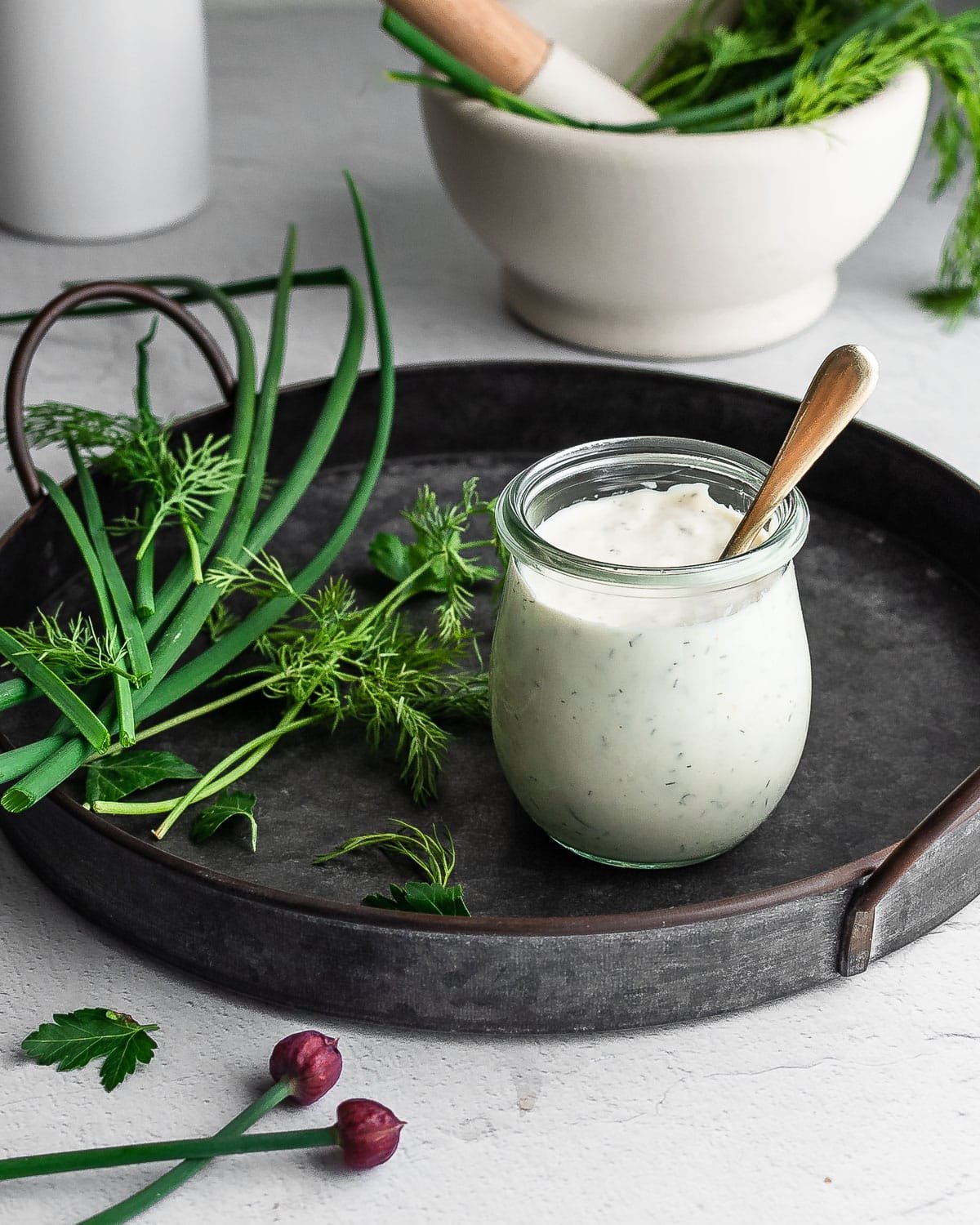
What is it?
Ranch dressing was developed in the 1940s by Steve Henson. By the late 1950s, the dressing had become commercially available and popular. The original dressing combines buttermilk, mayonnaise, and herbs such as parsley, dill, garlic, and chives with onion, mustard, and black pepper.
In this version, kefir replaces the buttermilk. Like buttermilk, kefir tastes creamy with a slightly tart edge. It’s also a great source of live cultures and beneficial bacteria.
Why this recipe works
- Kefir is an excellent substitute for buttermilk since it shares a creamy character and slightly sour flavor.
- Kefir is a naturally fermented food. That means you get the added bonus of plenty of probiotics.
- It’s easy to make. Just gather your ingredients, and whisk them together. It takes about 5 minutes flat.
- Store-bought dressings typically contain quite a few nasty preservatives and inflammatory oils. Homemade ranch dressing has cleaner ingredients, and that translates to a healthier dressing that tastes better, too.
Key Ingredients
Naturally, kefir is the foundation of the recipe, replacing the buttermilk called for in the original version. In addition to kefir, you’ll also find dried herbs, olive oil, vinegar, and mayonnaise.
- Kefir gives homemade ranch dressing a creamy quality and a pleasant, slightly sour flavor. It’s also loaded with good-for-your-gut probiotics.
- Mayonnaise helps to keep the dressing emulsified and gives it body. You can use a store-bought mayonnaise or make your own homemade avocado oil mayo instead.
- Alliums are members of the onion family, and they give kefir ranch dressing a savory quality. Chives, onion, and garlic are essential ingredients.
- Herbs typically include parsley and dill in addition to chives.
- Olive oil and vinegar help to balance the flavor and thin the dressing a touch so that it’s easier to pour.
Tips for Making Ranch Dressing
Making kefir ranch dressing is easy. You assemble the ingredients in a single bowl and whisk them until the dressing is combined. But there are a few extra tips you’ll want to remember as you make this recipe.
- Store-bought mayonnaise allows the dressing to last longer. Homemade mayonnaise has a short shelf life.
- An immersion blender or upright blender will combine all the ingredients easily, but whisking them works just as well.
- Fresh kefir works best in this recipe, and kefir that has started to separate will give your dressing an unpleasant cheesy flavor that can border on too sour.
- If you prefer fresh herbs to dried herbs, triple the volume called for in the recipe.
How to Serve It
You can serve kefir ranch dressing just as any homemade ranch dressing. It’s excellent as a dip for sliced fresh vegetables or even fermented vegetables such as these fermented carrots.
Naturally, it’s an excellent salad dressing, especially with tender lettuces such as Bibb or Buttercrunch. It’s also good drizzled over Burger Bowls.
Variations + Substitutions
Swap sour cream or buttermilk for some of the kefir. Sour cream will give the dressing a creamier, richer flavor.
Tarragon is a nice addition to the dressing. It works well with the creamy, sour notes of kefir.
Homemade yogurt is also delicious in this recipe. If you use yogurt instead of kefir, you may need to increase the olive oil and vinegar because yogurt is thicker than kefir.
Apple cider vinegar is a fine replacement for the white wine vinegar.
Lemon juice can also stand in for the white wine vinegar if that’s all you have.
Add an avocado to the dressing and blend it with the other ingredients. It gives the dressing a luscious, creamy flavor.
Love this recipe? You'll like these salads, too.
Recipe Questions
How long does it keep?
You can store the dressing in a tightly sealed container in the fridge for up to 3 days if using homemade mayonnaise and up to 1 week if using store-bought mayonnaise.
Can you freeze homemade ranch dressing?
No. Most homemade salad dressings do not freeze well and will separate.
Can I make this dairy-free?
No. Cultured dairy is the foundation of Ranch Dressing. Some vegan and dairy-free ranch dressing recipes call for dairy-free milk alternatives instead of buttermilk, kefir, or sour cream. This substitution will fundamentally change the flavor of the recipe.

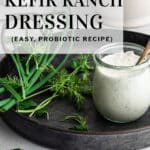
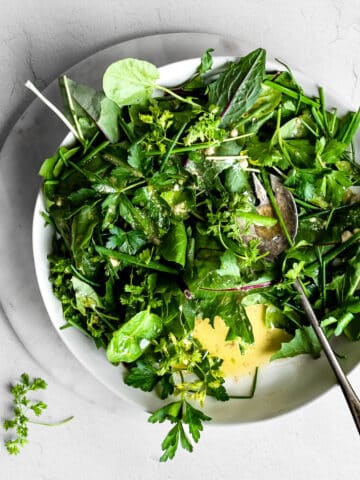
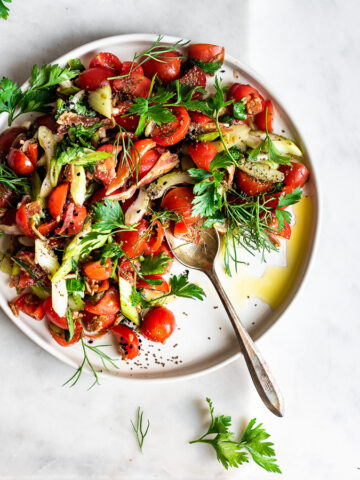
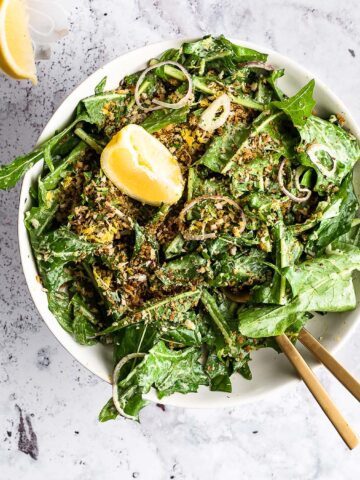
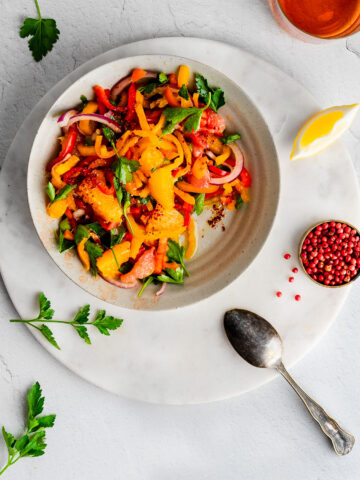
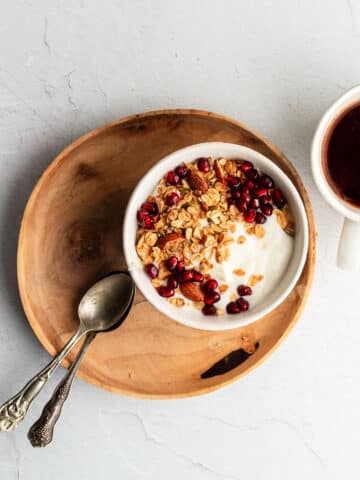
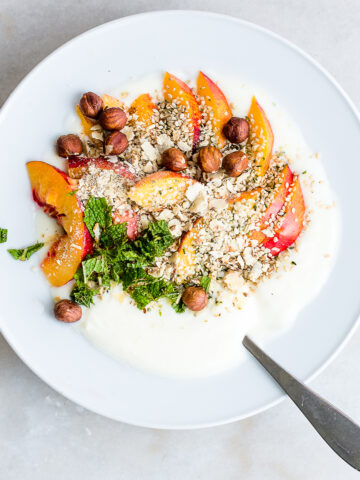
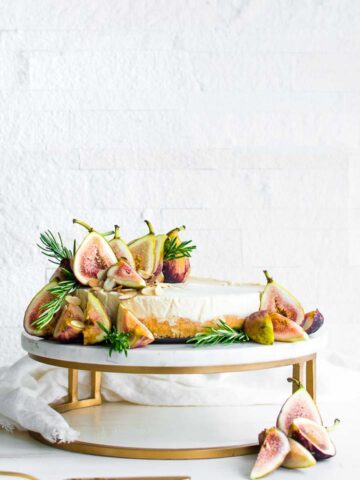
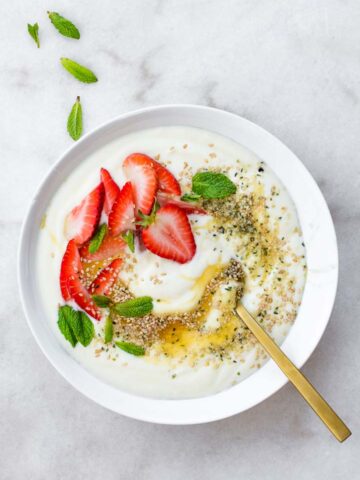
MaryS says
I love this as a dip for veggies and sometimes use it as a salad dressing. It's my surefire way to get my husband to eat more veggies by keeping some in a separate bowl in the fridge along with a glass container of raw veggies. That is his snack while dinner is being made. For that purpose, I like it a bit thicker. I adjust the herbs to taste and it is just wonderful. A true keeper and staple in our house!!!
Kath says
All the ingredients came together perfectly. I also used less salt. I have been thinking of making a dressing with kefir and this came at the right time. Next, I will try other dressing such as Thousand Island and French. This is a great way to get more probiotics in my diet.
Marta says
This is far and away the best homemade ranch recipe I've tried. I'm so thankful to have found it! As written it was too salty for me, I'll probably halve the salt next time, but otherwise perfect. Used cashew kefir as we can't do dairy, was still totally ranchy! 🙂 Thanks for a great recipe!
Susie Ford says
I really love this recipe. I used 2 Tablespoons of avocado oil and 1 of MCT oil in place of olive oil because the olive oil I have at the moment is not a high grade oil. I also used green onion tops because I was out of chives. Very creamy and delicious.
Tiffany says
I have made many ranch recipes that were not good. This one is perfect. So good. Thank you so much.
Amanda R. says
Best ranch dressing I've made so far. Could easily sub in fresh spices (I had only fresh chives and that worked). Simple and healthy!
Rachel @ Where The Wild Stuff Grows says
I have been looking for a great homemade ranch recipe for a while....will definitely have to try this one! Thanks for the recipe!
Erin Smith says
Hey Jenny,
I just made this and it was so good on my salad! I'm glad I found a ranch dressing that's so tasty. I used just plain kefir too and liked the tartness of it in the dressing.